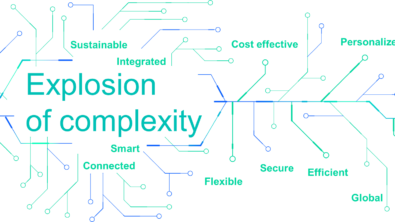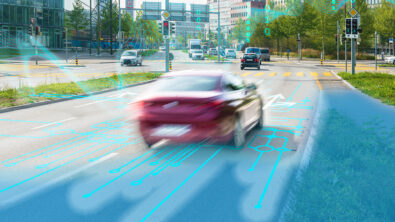Sustainability as a system requirement

System requirements as defined by model-based systems engineering (MBSE) include a variety of needs; of the business, of the customer, of regulators, and can include very specific technological needs or systemic ones. That includes sustainability, but just as with any other requirement it must be defined to implement it successfully. The informal scope of sustainability is referred to as The Three P’s, for people, planet, and profit. All three must be accounted for a sustainable project. That being said, let’s take a look at a single “p,” planet, to understand how to apply MBSE and create an environmentally sustainable system.
When developing an integrated product like a cell phone, or something larger, there are a bevy a decisions to be made over the lifecycle of the product. It starts in the concept phase with what the system needs to do. As we discussed in the Model Based Matters episode on feature-based engineering, it can be as simple as pressing a button to turn on the system or as complex as functioning autonomously. This is also where the sustainability require comes into the process, because every step of development will be guided by the decisions made early on. That could be where your company wants to source materials, will they be partially recycled? Should the products be made local to the customer population to minimize last-mile logistics, or centralized and limit supplier transportation times?
From the concept phase, a system architecture is delivered to the engineering domains who further refine the definitions with their knowledge and experience. To meet the sustainability requirements of the designs, electrical engineers may design integrated circuits for energy efficiency rather than pure performance as long as the component meets the other system requirements. Or a mechanical engineering team could find that 3D printing a component rather than a implementing a more traditional machining process would reduce wasted material and total energy for production. All of the selections made in the engineering processes are made based on data to meet the defined requirements, and these decisions need to be traceable for customers, regulators, and even OEMs to understand why one option was chosen over another.
Traceability is critical to any complex system of systems for a variety of reasons. From the point of environmental sustainability, it ensures development work is being completed towards the system requirements. But it can also act as a verification for how sustainable a product truly is. For example, the decision to manufacture parts with a 3D printing operation might save wasted material that would otherwise require recycling after machining, but the energy required to run the laser sintering may consume more energy than a machining process including the material recycling. That is only a simple balance to create a sustainable development process, it can become far more complex as suppliers, the regional energy mix, and logistics are brought into the system model. Tracing these pieces of information enables confidence in the product for the company and the customer, and increasingly regulators depending on the industry.
The complexities often handled with MBSE are technological in scope, but that is not always the case. And increasingly companies will be looking to streamline their businesses to meet sustainability targets, for their customers and their budgets. While not discussed here today, the switch to sustainable development includes profitability. Many methodologies to create the most environmentally sustainable product could wipe out all financial incentive for a business, and any development would halt. But there are also more direct incentives as the financial sector prioritizes environmental, social, and governance metrics in providing funding. Model-based systems engineering is a crucial tool in making the sustainable products and companies of tomorrow.
Siemens Digital Industries Software is driving transformation to enable a digital enterprise where engineering, manufacturing and electronics design meet tomorrow. Xcelerator, the comprehensive and integrated portfolio of software and services from Siemens Digital Industries Software, helps companies of all sizes create and leverage a comprehensive digital twin that provides organizations with new insights, opportunities and levels of automation to drive innovation.
For more information on Siemens Digital Industries Software products and services, visit siemens.com/software or follow us on LinkedIn, Twitter, Facebook and Instagram.
Siemens Digital Industries Software – Where today meets tomorrow


